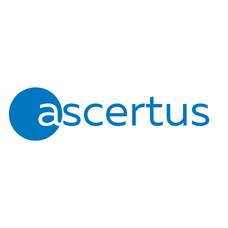Do you know what your organisation’s collaboration needs are? Find out with Ascertus
Today organisations are looking for ways to effectively replicate the physical office in a digital environment. The question though is: Is it possible to create a (near) perfect environment so that distributed teams in a hybrid working landscape can benefit from all the productivity advantages of collaboration and human connection – despite being dispersed?
Achieving the balance between flexibility – not just locational, but also in the form of device options – and collaboration is key. Thank goodness for all the technology tools that are available today to help facilitate collaboration. But there’s a downside as well – too much choice can be confusing.
So, before investing time, effort and money in deploying any or multiple tools, determine your organisation’s objectives for collaboration first.
Corporate objectives
Is your organisation’s drive for collaboration driven by corporate level objectives, for instance? To support team building and employee well-being, maybe? Or is it to promote employee engagement and safeguard company culture? Or other objectives along these corporate lines? If so, potentially you are looking at tools that are typically classed as employee experience platforms. For instance Microsoft’s Viva is one such tool, and is available within Microsoft 365 too.
Internal collaboration
On the other hand, if your goal is work productivity led, then foremost understand the needs of the audience. For example, if employees routinely need to collaborate on documents internally, you may already have the capability in the organisation’s already deployed document management system (DMS). Today best practice DMSs offer effective co-authoring capability that allows multiple named individuals to contribute to a document, whilst the master controller of the work in question has the final say on whether or not the changes should be incorporated in the next version. Another advantage of this kind of capability is that people can utilize this functionality from any device, thanks to cloud technology.
This functionality is especially great when teams are working on documents with tight deadlines. Our clients working on M&A projects use this capability a lot. Similarly, adoption of co-authoring is growing in tax and finance teams where multiple people need to work on different sections within the same spreadsheet. Rather than trying to consolidate multiple spreadsheets – which runs the risk of all manner of errors creeping in – co-authoring not only takes away the headache of patching the data, but also provides an audit trail with the highest level of security built in.
For the most comprehensive collaboration functionality, Microsoft Teams, is already proving popular. All the major collaboration tools are available from within this platform – people can schedule meetings, make phone calls, instant message and even create private channels for impromptu brainstorm sessions.
External collaboration on documents
If employees need to routinely collaborate with external parties on documents – be they clients, partners or other third -party organisations – there are a number of tools such as Google Docs and OneDrive that are already hugely popular.
Some DMSs offer content sharing capability via the cloud. The advantages of such tools are that the receiving party does not need to have the same DMS deployed to receive the document, the highest level of security is already embedded, and the content can easily be accessed from any type of device.
Workflow-led collaboration
This represents the most advanced capability when it comes to collaboration. If your organisation needs to collaborate at an enterprise level, where a document needs to be passed on from department to department as part of the collaboration and approval process, then you are potentially looking at enterprise-level matter management or contract management applications. These tools provide a high degree of workflow automation and are often used by procurement departments in corporates, for example.
As you can see, there are many approaches and combination of tools that you could adopt – but it’s best to understand the requirements of your internal and external audiences so that you pick the right applications to meet the needs of your organisation, now and in the future.



